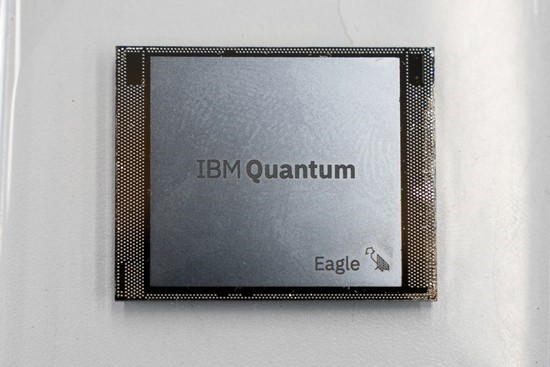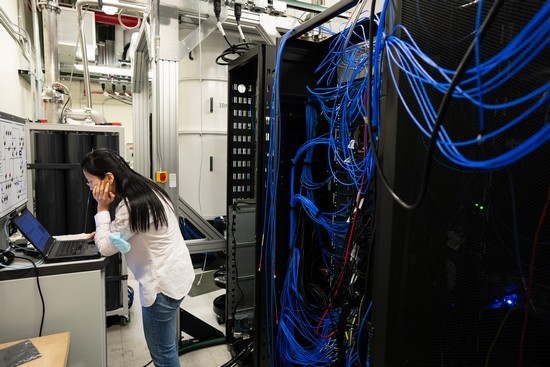Quantum computers today are small in computational scope —
the chip inside your smartphone contains billions of transistors, while the
most powerful quantum computer contains a few hundred of the quantum equivalent
of a transistor. They are also unreliable. If you run the same calculation over
and over, they will most likely churn out different answers each time.
اضافة اعلان
But with their intrinsic ability to consider many
possibilities at once, quantum computers do not have to be very large to tackle
certain prickly problems of computation, and on Wednesday, IBM researchers
announced they had devised a method to manage the unreliability in a way that
would lead to reliable, useful answers.
“What IBM showed here is really an amazingly important step
in that direction of making progress towards serious quantum algorithmic
design,” said Dorit Aharonov, a professor of computer science at Hebrew
University of Jerusalem who was not involved with the research.
Although researchers at Google in 2019 claimed that they had
achieved “quantum supremacy” — a task performed much more quickly on a quantum
computer than a conventional one — IBM’s researchers say they have achieved
something new and more useful, albeit more modestly named.

“We’re entering this phase of quantum computing that I call
utility,” said Jay Gambetta, a vice president of IBM Quantum. “The era of
utility.”
A team of IBM scientists who work for Gambetta described
their results in a paper published Wednesday in the journal Nature.
Present-day computers are called digital, or classical,
because they deal with bits of information that are either 1 or 0, on or off. A
quantum computer performs calculations on quantum bits, or qubits, that capture
a more complex state of information. Just as a thought experiment by physicist
Erwin Schrödinger postulated that a cat could be in a quantum state that is
both dead and alive, a qubit can be both 1 and 0 simultaneously.
That allows quantum computers to make many calculations in
one pass, while digital ones have to perform each calculation separately. By
speeding up computation, quantum computers could potentially solve big, complex
problems in fields such as chemistry and materials science that are out of
reach today. Quantum computers could also have a darker side by threatening
privacy through algorithms that break the protections used for passwords and
encrypted communications.

When Google researchers made their supremacy claim in 2019,
they said their quantum computer performed a calculation in 3 minutes, 20
seconds that would take about 10,000 years on a state-of-the-art conventional
supercomputer.
But some other researchers, including those at IBM,
discounted the claim, saying the problem was contrived. “Google’s experiment —
as impressive it was, and it was really impressive — is doing something which
is not interesting for any applications,” said Aharonov, who also works as the
chief scientific officer of Qedma, a quantum computing company.
The Google computation also turned out to be less impressive
than it first appeared. A team of Chinese researchers was able to perform the
same calculation on a nonquantum supercomputer in just over five minutes, far
quicker than the 10,000 years the Google team had estimated.
The IBM researchers in the new study performed a different
task, one that interests physicists. They used a quantum processor with 127
qubits to simulate the behavior of 127 atom-scale bar magnets — tiny enough to
be governed by the spooky rules of quantum mechanics — in a magnetic field.
That is a simple system known as the Ising model, which is often used to study
magnetism.
This problem is too complex for a precise answer to be
calculated even on the largest, fastest supercomputers.
On the quantum computer, the calculation took less than
one-thousandth of a second to complete. Each quantum calculation was unreliable
— fluctuations of quantum noise inevitably intrude and induce errors — but each
calculation was quick, so it could be performed repeatedly.
Indeed, for many of the calculations, additional noise was
deliberately added, making the answers even more unreliable. But by varying the
amount of noise, the researchers could tease out the specific characteristics
of the noise and its effects at each step of the calculation.

In essence, the researchers were able to subtract the
effects of noise from the unreliable quantum calculations, a process they call
error mitigation.
“You have to bypass that by inventing very clever ways to
mitigate the noise,” Aharonov said. “And this is what they do.”
Altogether, the computer performed the calculation 600,000
times, converging on an answer for the overall magnetization produced by the
127 bar magnets.
But how good was the answer?
For help, the IBM team turned to physicists at the University
of California, Berkeley. Although an Ising model with 127 bar magnets is too
big — with far too many possible configurations — to fit in a conventional
computer, classical algorithms can produce approximate answers, a technique
similar to how compression in JPEG images throws away less-crucial data to
reduce the size of the file while preserving most of the image’s details.
Michael Zaletel, a physics professor at Berkeley and an
author of the Nature paper, said that when he started working with IBM, he
thought his classical algorithms would do better than the quantum ones.
“It turned out a little bit differently than I expected,”
Zaletel said.
Certain configurations of the Ising model can be solved
exactly, and both the classical and quantum algorithms agreed on the simpler
examples. For more-complex but solvable instances, the quantum and classical
algorithms produced different answers, and it was the quantum one that was
correct.
Thus, for other cases where the quantum and classical
calculations diverged and no exact solutions are known, “there is reason to
believe that the quantum result is more accurate,” said Sajant Anand, a
graduate student at Berkeley who did much of the work on the classical
approximations.
Read more Technology
Jordan News



